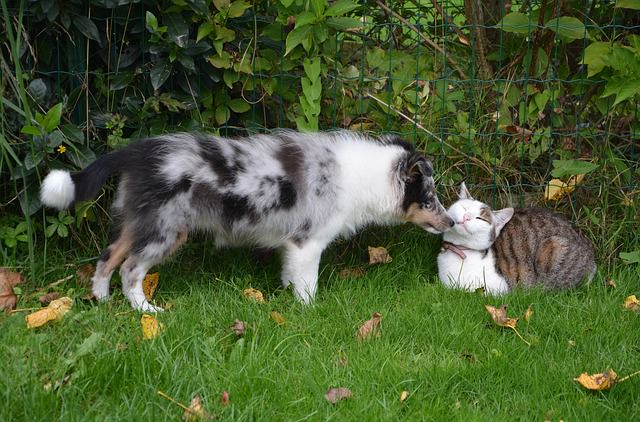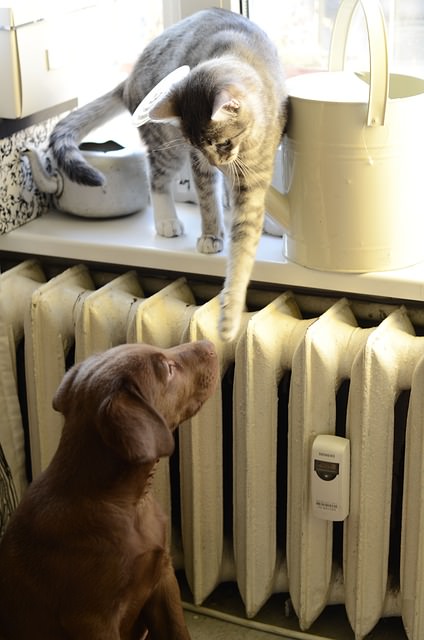There are some dogs who love their feline friends at first sight, but then there are others who seem determined to play into that age-old stereotype that says dogs and cats can’t get along. Dogs are instinctive hunters, and a strong prey drive or a general dislike of cats can cause chaos between the two species. But if you’re an all-around animal lover, the question of whether or not you can train a dog to like cats has likely crossed your mind. There is no easy answer, but understanding the situation is the first step toward peaceful multi-species cohabitation.

The Problem
Dr. Gary Landsberg explained to Pet Sitters International that pet owners want their dogs and cats to get along, but natural instincts and personality quirks often get in the way. Many dog breeds have been bred for generations to be hunters. Your pup might not be tracking down prey in an official sense, but those natural instincts run deep.
Besides a possible prey drive, dogs—especially puppies—tend to lack self control. Cats can also have this behavioral trait, but more often, cats are cautious. They’re good at recognizing threats, and because of that, they’re fearful. When put together, the two species show compatibility issues, and the problem can be made worse depending on individual personalities.

The Solution
If your dog is showing signs of predatory aggression toward cats, animal behaviorists report that with the right kind of training and patience, it is possible to change their behavior–but it isn’t guaranteed. Here are a few training tips that have been known to work.
Socialization
The best chances of success are when you can start socializing your dog with cats at a young age. Puppies are most open to new experiences during the first 16 weeks of life. Start introducing your pup to cats on a regular basis and reward them with treats and positive attention when they behave nicely.
Impulse Control
A lack of impulse control is what causes your dog to bark at people outside the window, snatch food off the table, and it also has something to do with why they leap into action to chase a cat. Impulse control is a hard-earned skill that affects nearly every aspect of your dog’s behavior. Mastering it before you introduce them to a cat will streamline the training process.

Desensitization
Desensitization works through gradual exposure. Start by locking your dog safely in an enclosed area where they can see the cat but can’t get to it. Reward them for every moment–no matter how fleeting–that they’re calm. Do this several times before allowing the dog in the same area with the cat. Gradually move them closer while keeping tight control of your dog. It’s a slow process that might require a few steps backward, but with commitment and time, your dog should eventually get used to the cat and learn they’re rewarded for calm behavior.
The most important thing to remember when teaching a dog to get along with a new feline family member is that it won’t happen overnight. Keep the dog and cat in separate areas of the house for the first several weeks as you initiate controlled interactions and watch for potential problems. It will take time, but if you can’t imagine a home without both a dog and a cat, the effort will be worth it. If your training techniques don’t seem to be working, hire a professional for a personalized plan.
